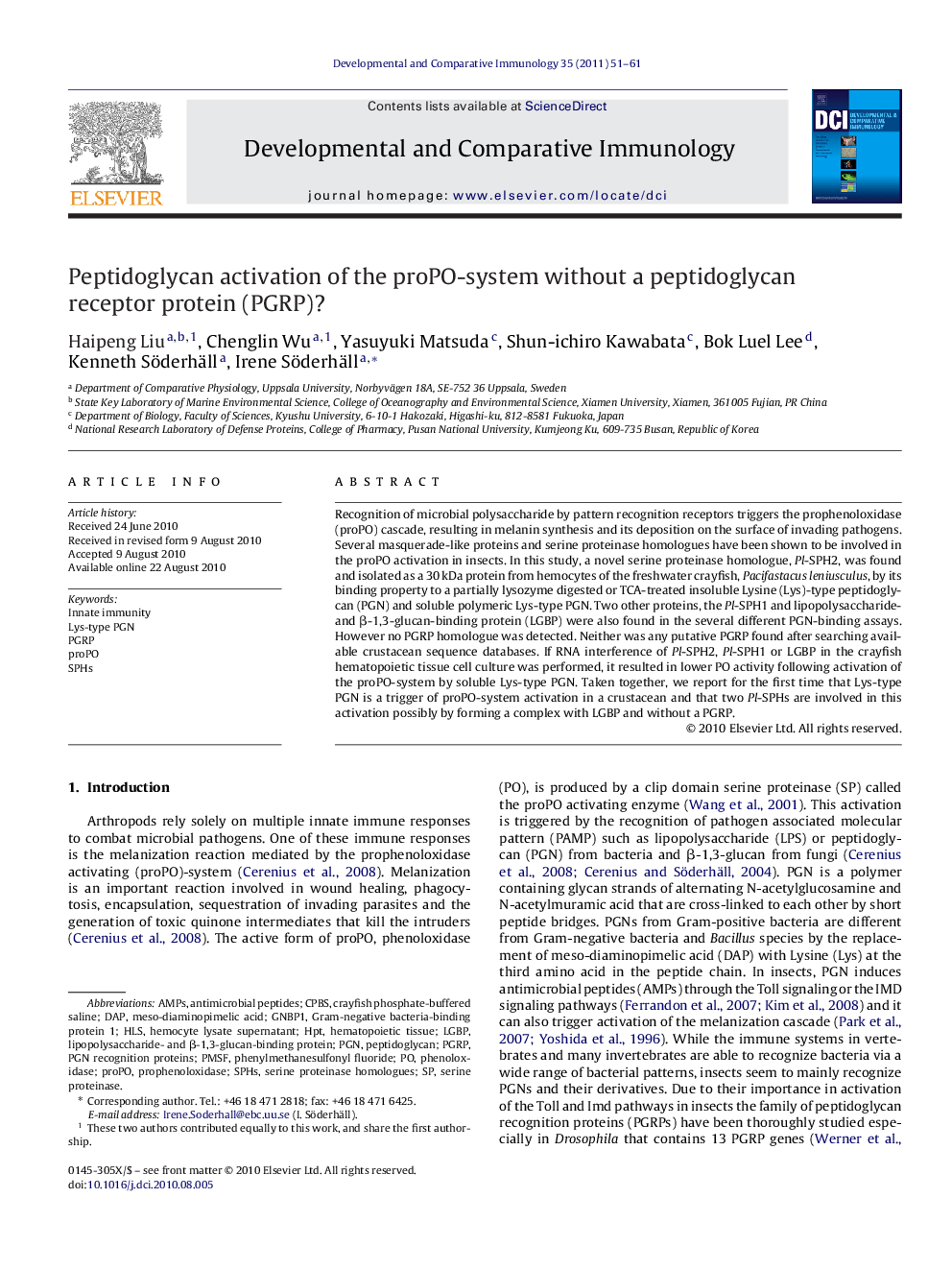| Article ID | Journal | Published Year | Pages | File Type |
|---|---|---|---|---|
| 2429541 | Developmental & Comparative Immunology | 2011 | 11 Pages |
Recognition of microbial polysaccharide by pattern recognition receptors triggers the prophenoloxidase (proPO) cascade, resulting in melanin synthesis and its deposition on the surface of invading pathogens. Several masquerade-like proteins and serine proteinase homologues have been shown to be involved in the proPO activation in insects. In this study, a novel serine proteinase homologue, Pl-SPH2, was found and isolated as a 30 kDa protein from hemocytes of the freshwater crayfish, Pacifastacus leniusculus, by its binding property to a partially lysozyme digested or TCA-treated insoluble Lysine (Lys)-type peptidoglycan (PGN) and soluble polymeric Lys-type PGN. Two other proteins, the Pl-SPH1 and lipopolysaccharide- and β-1,3-glucan-binding protein (LGBP) were also found in the several different PGN-binding assays. However no PGRP homologue was detected. Neither was any putative PGRP found after searching available crustacean sequence databases. If RNA interference of Pl-SPH2, Pl-SPH1 or LGBP in the crayfish hematopoietic tissue cell culture was performed, it resulted in lower PO activity following activation of the proPO-system by soluble Lys-type PGN. Taken together, we report for the first time that Lys-type PGN is a trigger of proPO-system activation in a crustacean and that two Pl-SPHs are involved in this activation possibly by forming a complex with LGBP and without a PGRP.
